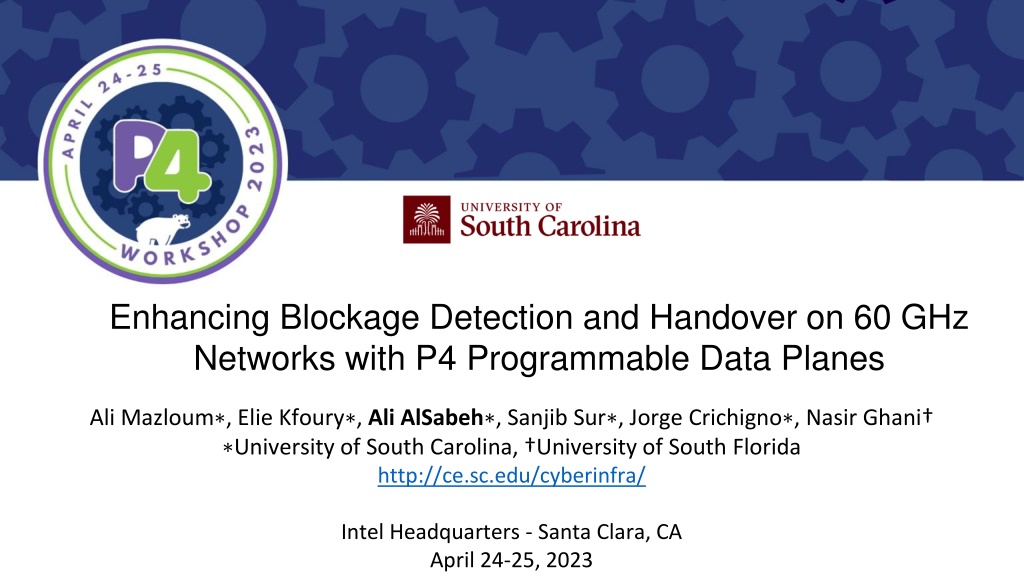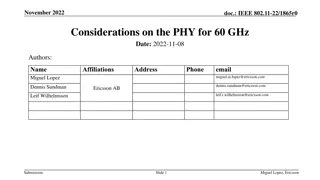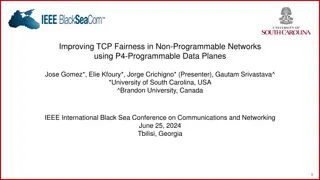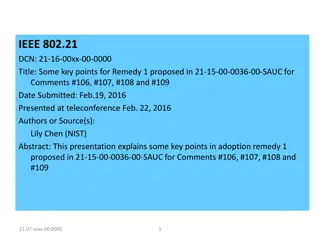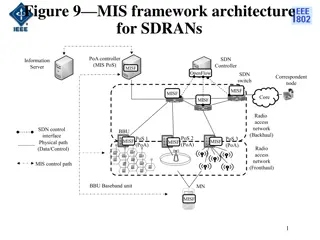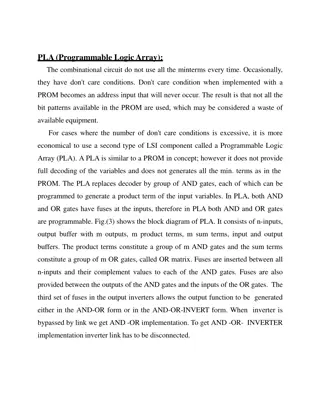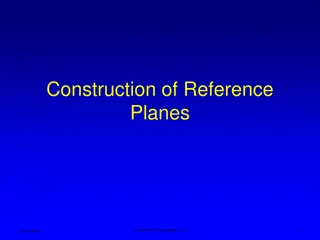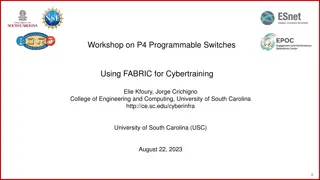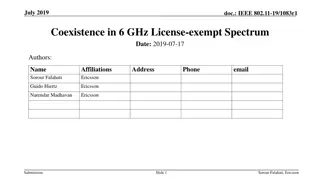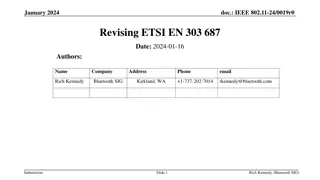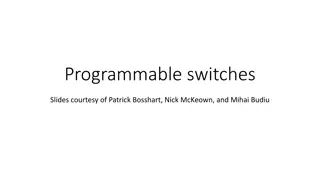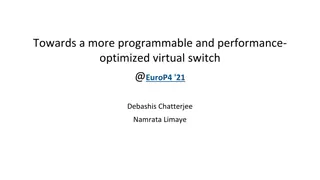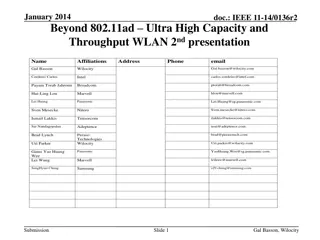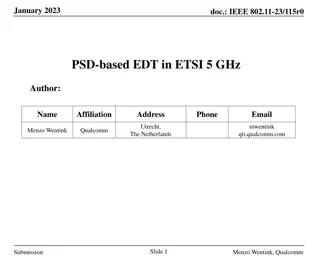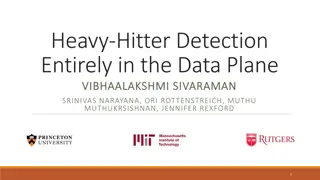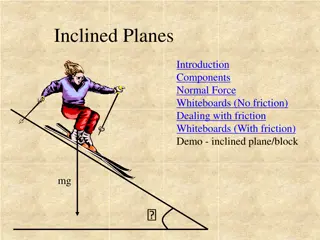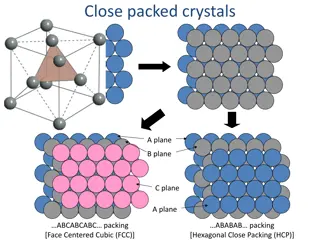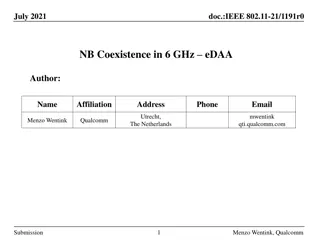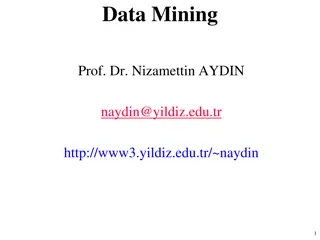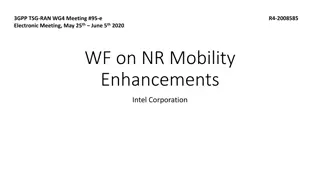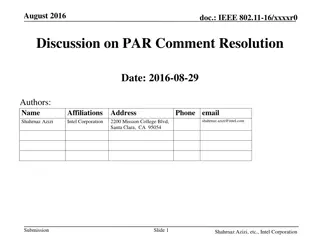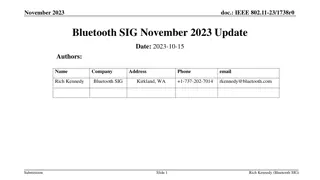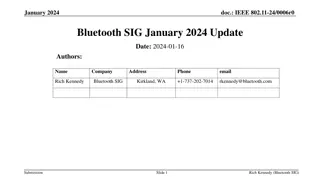Enhancing Blockage Detection and Handover on 60 GHz Networks with P4 Programmable Data Planes
The study presents a system using programmable switches to monitor packet inter-arrival time for blockage detection on mmWave networks. Results show fast recovery speeds and minimal impact on flow completion time, with contributions focusing on leveraging programmable switches and real device scenarios.
Download Presentation

Please find below an Image/Link to download the presentation.
The content on the website is provided AS IS for your information and personal use only. It may not be sold, licensed, or shared on other websites without obtaining consent from the author. Download presentation by click this link. If you encounter any issues during the download, it is possible that the publisher has removed the file from their server.
E N D
Presentation Transcript
Enhancing Blockage Detection and Handover on 60 GHz Networks with P4 Programmable Data Planes Ali Mazloum , Elie Kfoury , Ali AlSabeh , Sanjib Sur , Jorge Crichigno , Nasir Ghani University of South Carolina, University of South Florida http://ce.sc.edu/cyberinfra/ Intel Headquarters - Santa Clara, CA April 24-25, 2023
Motivation The performance of a mmWave connection significantly degrades upon blockage Solutions rely on handover connections from the current (blocked) access point to an alternative (non-blocked) access point Upon blockage, the inter-arrival time (IAT) of the packets increases by multiple folds The increase in the IAT provides a clear indication of the blockage 2
Proposed System The system leverages programmable switches to monitor the inter-arrival time (IAT) of the packets Using the measurements, the programmable switch detects the blockage and then notifies the end user to handover The system was implemented and tested on a Tofino hardware switch and off-the- shelf mmWave-compatible devices 3
Results: Recovery Speed The recovery speed from blockage was evaluated The line of sight blocked for 2 seconds The proposed around 160 milliseconds to fully recover from the blockage (LOS) was system required 1 1Y. Oguma et. al. Implementation and evaluation of reactive base station selection for human blockage in mmWave communications, Asia-Pacific Conference on Communications (APCC), 2015 4
Results: Flow Completion Time The flow completion time (FCT) of a 1-gigabyte flow was evaluated in four scenarios Each scenario was repeated 50 times The LOS was blocked for 2 seconds The FCT of the proposed system is close to the w/o blockage scenario 5
Contributions Leveraging PDP switches to compute the packet s IAT and detect mmWave blockage on a per-packet basis Conducting evaluations on a testbed composed of real devices, including a widely used PDP switch (Intel s Tofino), mmWave access points, and a mobile device operating in the 60 GHz band Detecting the blockage and initiating handover before the throughput degrades from the blockage Proposing a solution to the handover decision problem without modifying end devices Future work aims at extending the system to select the best alternative non-blocked access point by utilizing information from end devices 6
This work is supported by NSF awards number 2118311 For additional information, please refer to http://ce.sc.edu/cyberinfra/ Email: jcrichigno@cec.sc.edu, aalsabeh@email.sc.edu, amazloum@email.sc.edu 7
